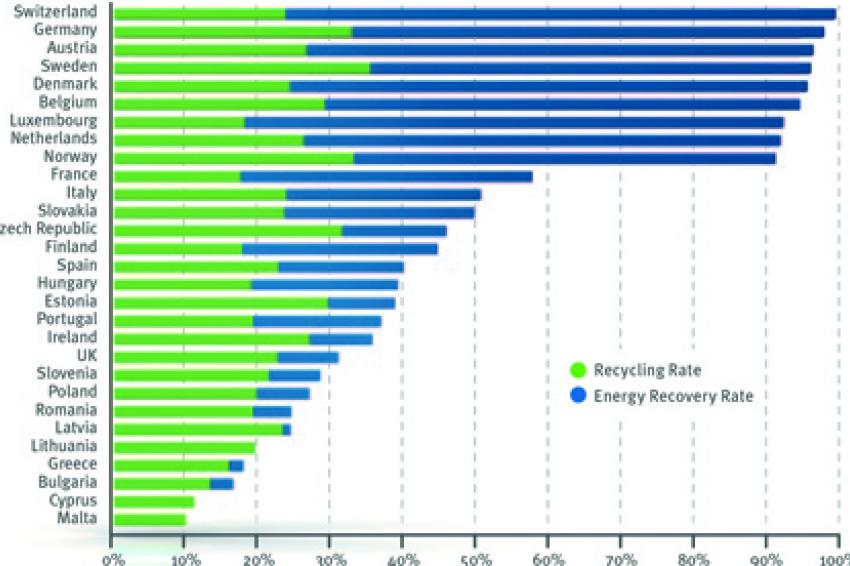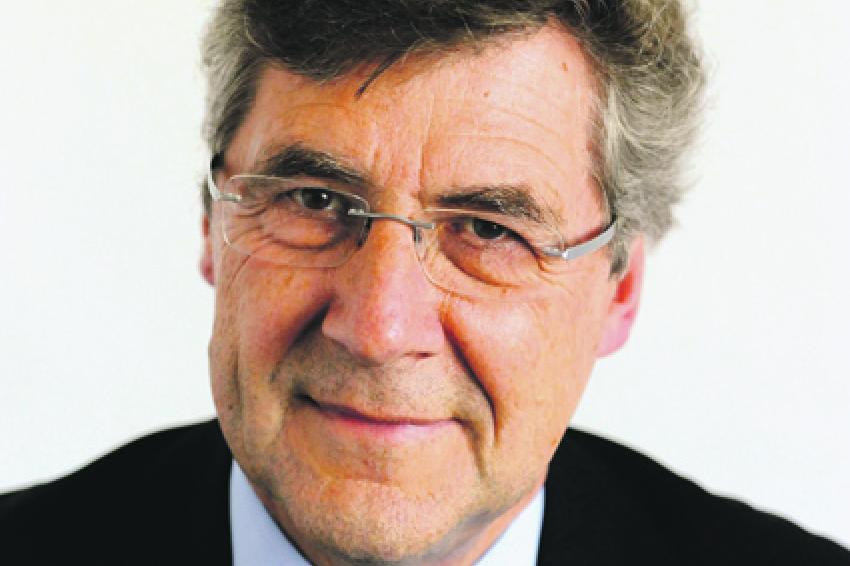Plastics Packaging and Sustainability
An Exciting Challenge
Sustainability - With a share of more than 40% plastics packaging represents the biggest application field of plastics in Europe today. Plastics packaging is an essential element of everyday life, including many different kinds of consumer, industrial and transport packaging.
Innovations along the value chain opened access to markets which have long been excluded for plastics packaging as for example preserved food, wine or baby food. In Germany the production of plastics packaging more than doubled in the past 20 years, rising from 2.05 million tons in 1991 to 4.3 million tons in 2011.
The main reasons for this increase are:
- Replacement of traditional packaging materials, due to excellent functionality of plastics and reduced resource consumption,
- Specific suitability of plastic packaging to meet socio-demographic developments as for example small packaging units for single households or consumer trends and lifestyle (fresh goods packaging, packaging for convenience and leisure products),
- Increased export potential of the German economy, exported goods more and more packed in plastics packaging.
Almost half of the packaging manufactured in Germany is used to protect goods shipped abroad.
Plastics packaging has the potential to meet the essential demands of sustainable packaging requirements to a very high degree. According to EUROPEN Sustainable Packaging the following requirements should be fulfilled.
Sustainable packaging should:
- a)be designed holistically with the product in order to optimize overall environmental performance, (i.e. provide maximum functionality with minimum material use)
- b)be made from responsibly sourced materials,
- c)be designed to be effective and safe throughout its life cycle,
- d)meet market criteria for performance and cost,
- e)meet customer / consumer choice and expectations, and
- f)be recovered efficiently after use.
A closer look will be taken at aspects a), b) and f).
Maximum Functionality with Minimum Material Use
The most important property of packaging consists in protecting the packed good during transport and use. No compromise can be allowed fulfilling this function. An additional challenge is to reach this goal with a minimum of material input.
Low weight and manifold - in many cases unique - packaging properties of plastics packaging are producing low environmental impact. This can be visualized by the essential environmental indicator ‘carbon footprint', which does not determine the ecological profile of a product alone. To give an example: the carbon footprint of a 250 g sausage packaging amounts to 3% of the whole package with content (source: IFEU/IK 2008). Plastics packaging is intended to protect valuable products such as food, often manufactured with an ecological burden 4-9 times higher than the plastics packaging itself (source: denkstatt 2010).
Low transport weight, reduced vehicle emissions and less traffic due to less truck transport are further ecological advantages of plastics packaging.
Plastics packaging undergoes permanent innovation cycles which still offer huge potential for optimization, be it by weight and energy saving, functional improvement, use of plastics recycling material or others. An example for the most successful though not yet concluded improvement of an ecological profile is the 1.5 l PET-bottle in Germany, which has achieved significant ecological optimization within a very short period of time.
This optimization was reached by improvements in the PET production, energy saving during the production of preforms and bottles and the filling process, light weighting, increased use of recycling material and improved logistics of the beverages.
The principle ‚maximum functionality with minimum material use' with respect to plastics packing also becomes evident by the fact that 54% of all food products in Germany are packed in plastics whereas the weight of the plastics packaging used amounts to only 20% of the food packaging in total.
Responsibly Sourced Materials
Plastics packaging is often accused to be a short-life product basing on valuable oil resources. Apart from the fact that only 1.5 % of crude oil is used for the production of plastics packaging in Europe, the share of raw materials made of fossil-based resources is clearly shifting towards natural gas. Moreover the development and production of classic plastics packaging material on the basis of renewable raw materials is pushed, on initiative of the big brand manufacturers. Bio-PET is currently being developed while bio-polyethylene based on sugarcane is already available on the market. When it will be possible to produce big quantities of hydrocarbons as chemical basis for the production of plastics from renewable resources without competing with food production and cultivable land for food production, these plastics will be most suitable to pack branded articles (cosmetics, beverage packaging).
However, life cycle assessments also show that plastics packaging on the basis of renewable resources are not per se ecologically advantageous, case-by-case studies are always necessary. Regarding the use of responsibly sourced materials it must be underlined that the application of recycled material manufactured from used plastics packaging is constantly rising, plastics packaging consists of hydrocarbons which means that all carbon sources can be used for future applications (fossil and renewable sources, CO2),
the substitution of plastics by other materials is ecologically counterproductive, because it would lead to a doubling of greenhouse gas emissions.
Recovered Efficiently After Use
Plastics packaging is often criticized because of insufficient recovery and littering after use. It is true that the level of recovery of plastics waste and plastics packaging is very different in Europe. In Germany plastics packaging represents around 61% of annual plastics waste.
In 2009 the recovery quota of plastics packaging in Germany were:
- Material recycling: 42%
- Feedstock recycling: 2%
- Energy recovery: 55%
- Recovery in total: 99%
This shows that the recovery of plastics packaging contributes to a very high degree to the recycling of plastics waste in Germany in total (33%). Fig. 1 illustrates different recovery ratio of plastics waste in Europe, which are significantly subject to the recovery quota of packaging waste.
It is one of the main tasks of the plastics industry and all stakeholders in Europe to increase the recovery ratio. Interestingly, the highest quota can be observed in countries where landfill of (plastics) waste is banned. A well-organized waste management system with the steps collection, sorting and recycling is also necessary to face the problem ‚marine litter'.
Already today plastics packaging contributes largely to a sustainable development in the field of food protection. In all phases of its life cycles there is still space for vast innovation potentials, ranging from (renewable) raw materials towards the performance as optimized packaging and end of life. However, further efforts are required in many European regions to make sure that plastics packaging will develop its full potential in the spirit of sustainability.
Contact
IK Industrievereinigung Kunststoffverpackungen e.V.
Kaiser-Friedrich-Promenade 43
61348 Bad Homburg v.d.H.






